Bazar sustentável / Sustainable bazaar
por um vestir consciente / for a conscious clothingE a moda como “upcycling” da sustentabilidade / And the fashion as the “upcycling” of the sustainability
Recentemente ocorreu a 3ª edição do Bazar Sustentável promovido pela designer e stylist Chiara Gadaleta na Escola São Paulo. A proposta consistiu em reunir roupas e acessórios de algumas marcas, como por exemplo, Juliana Jabour, Raphael Falci, Index Jeans e Kosii, que ao invés de terem seu fim no lixo têxtil, tais peças de coleções passadas ou paradas em estoque ganharam preços acessíveis de R$5,00 a R$50,00. / Recently the 3rd edition of the Sustainable Bazaar promoted by the fashion designer and stylist Chiara Gadaleta took place at Escola São Paulo (Sao Paulo School). The proposal was to gather clothes and accessories of some Brazilian brands, such as Juliana Jabour, Raphael Falci, Index Jeans and Kosii, that instead of having its ending as textile waste, such items of clothing of past collections or still in stock gained affordable prices.
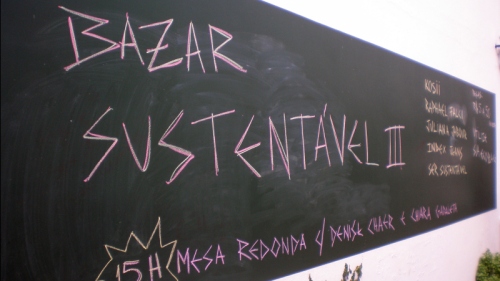
Bazaar entree
Além da presença destas marcas, Chiara Gadaleta aproveitou o evento para lançar a sua linha de acessórios feita a partir de sobras de materiais descartados pela produção em larga escala e é denominada de “Ser sustentável por Chiara Gadaleta”. São colares lindos que chamam a nossa atenção mesmo vistos de longe e, sendo produzidos artesanalmente ganham o status de peça única. / Besides the presence of these brands, Chiara Gadaleta used the event to launch its line of accessories made from scraps of discarded materials by large-scale production and it is called “Being sustainable by Chiara Gadaleta”. They are beautiful necklaces that draw our attention even when they are seen from afar and, being produced by craftsmen they earn the status of unique.
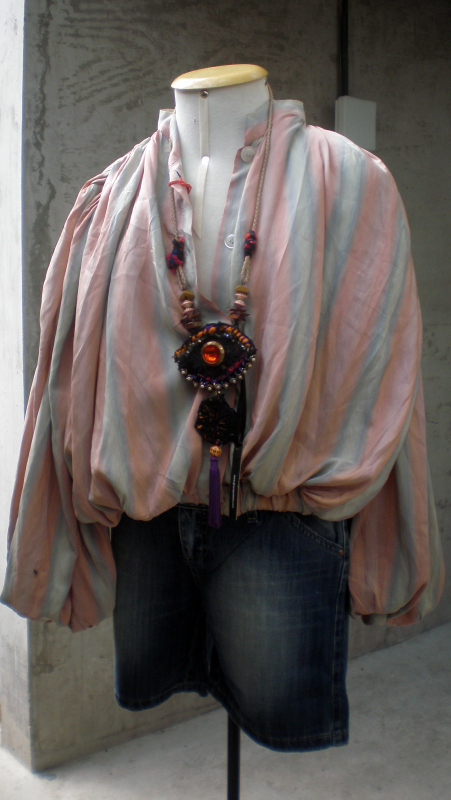
Chiara's necklace

Chiara's necklace
Ambas as iniciativas são meios de consumo consciente. De um lado, temos as roupas as quais têm a oportunidade de serem, finalmente, usadas. Aliás, é bom lembrar que esta prática de revenda de roupas e acessórios das grifes não é novidade e, pelo menos aqui em São Paulo, as lojas outlets e os bazares (como por exemplo, o Q!Bazar) são exemplos que atestam este tipo de ação. A pergunta que fica, então, é: qual é o destino das roupas e dos acessórios que não são vendidos mesmo nestas ações? Eles são levados ao lixo têxtil e queimados? Ou eles são doados, reutilizados e reciclados para serem transformados em outros produtos? À exemplo dos colares da linha “Ser Sustentável”, refugos de tecidos e outros materiais descartados são reaproveitados e transformados em um produto exclusivo e mostram que sempre há possibilidades de aumentar o ciclo de vida de um produto. / Both initiatives are means of conscious consumption. On one hand, we have the clothes which have the opportunity to be finally used. Moreover, it is worth remembering that the practice of resale clothes and accessories of brands is not new and, at least here in Sao Paulo, shops and the bazaar outlets (eg, Q! Bazaar) are examples that prove this type action. Then the question that remains is: what is the destination of the clothes and accessories that are not sold even in these actions? Are they taken to the textile landfills and burnt? Or are they donated, reused and recycled to be transformed into other products? In the case of necklaces the line “Being sustainable by Chiara Gadaleta”, fabric scraps and other discarded materials are recycled and transformed into a unique product and they show that there is always possibilities for increasing the life cycle of a product.
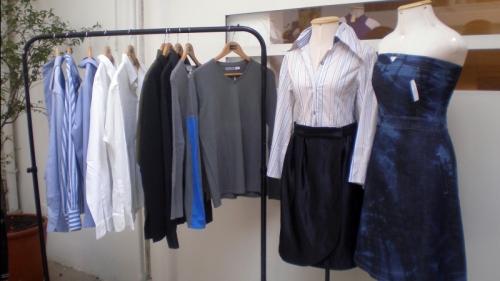
Clothes to sell at the bazaar
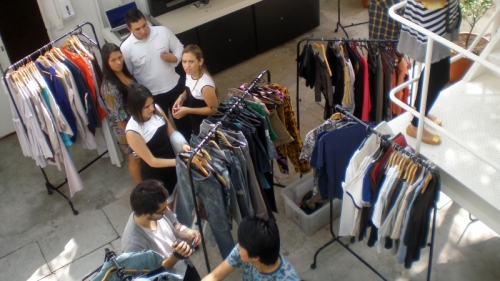
Shoppers at the bazaar
Mais interessante que o bazar, foi o bate-papo sobre moda sustentável com Chiara e Denise Chaer, da Comunicação Orgânica. Entre os mais variados assuntos abordados como os pilares do desenvolvimento sustentável (economia, sociedade, meio ambiente e cultura), tecidos naturais e orgânicos, marcas e estilistas que trabalham com este conceito de sustentabilidade na moda e, o mais interessante, o conceito de “upcycling” (do qual fui apresentada). / More interesting than the bazaar was the chat about sustainable fashion with Chiara Gadaleta and Denise Chaer, from the company Comunicação Orgânica (“Organic Communication”). Among the various issues raised as the pillars of sustainable development (economy, society, environment and culture), natural and organic fabrics, brands and designers who work with the concept of sustainability in fashion and, most interestingly, the concept of “upcycling” (which I was introduced).
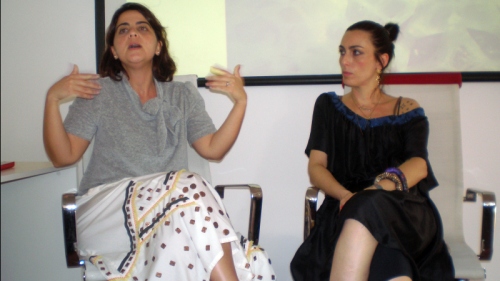
Denise Chaer and Chiara Gadaleta (right)
“Upcycling” é um conceito criado por William McDonaugh e Michael Braungart (autores do livro “Cradle to Cradle”) que significa o processo de transformação de algo que é descartável em algo de maior uso e valor. Em outras palavras, é mais que um processo de reciclagem, pois o “upcycling” envolve além das questões ambientais (como redução de consumo de matérias-primas, da poluição, e entre outras), o fato de o material/produto transformado ter um valor igual ou superior ao seu valor inicial. / “Upcycling” is a concept created by William McDonaugh and Michael Braungart (authors of the book “Cradle to Cradle”) which means the transformation of something that is disposable into something of greater use and value. In other words, it is more than a recycling process, as the “upcycling” involves addition of environmental issues (such as reducing consumption of raw materials, of pollution, and others), the fact that the material and/or product processed have a value equal to or higher than its initial value.
Neste sentido, a moda pode cumprir um papel importante como “upcycling” da sustentabilidade. Com a democratização e a pluralidade cada vez maior da moda, faz-se necessário difundir práticas que levem em consideração este conceito aplicado em roupas, acessórios e joias. Um exemplo é a customização de roupas (vejam o post anterior) na qual a finalidade é ter uma roupa com um valor de design igual ou maior que o inicial (é claro que a customização que fiz foi a primeira e espero que venham melhores soluções!). / In this sense, fashion can play an important role as the “upcycling” of sustainability. With the growth of democratization and plurality in fashion, it is necessary to disseminate practices that take into account this concept applied to clothing, accessories and jewelry. An example is the customization of clothing (see the previous post) in which the aim is to have a item of clothing with a design value equal to or greater than the original one (of course, the customization I did was the first and I hope I will come up with best solutions!).
Adorei o post!!
E mais ainda toda essa idéia do Bazar upcycling, muito interessante o conceito e, quem dera ele fosse mais explorado por diversas áreas como a de calçados por exemplo, mobiliário etc
Cada dia mais me surpreendo ao ver que é possível sim promover ações que ajudem a todos (tanto quem precisa se desfazer do estoque como é o caso, quanto quem sempre quis ter uma peça da marca e nunca pôde….)
Ações assim colocam as pessoas em contato, promovem a consciência e também o Design e a inovação.
Demais!!
Parabéns Ana!!
| Posted 14 years, 5 months ago